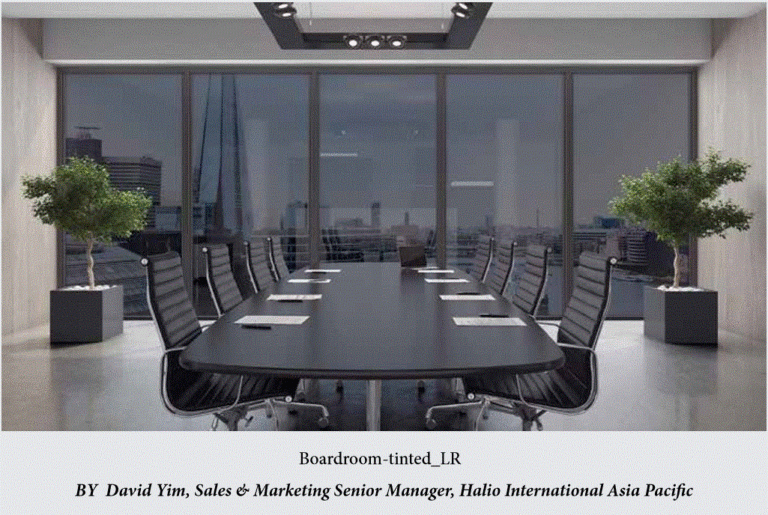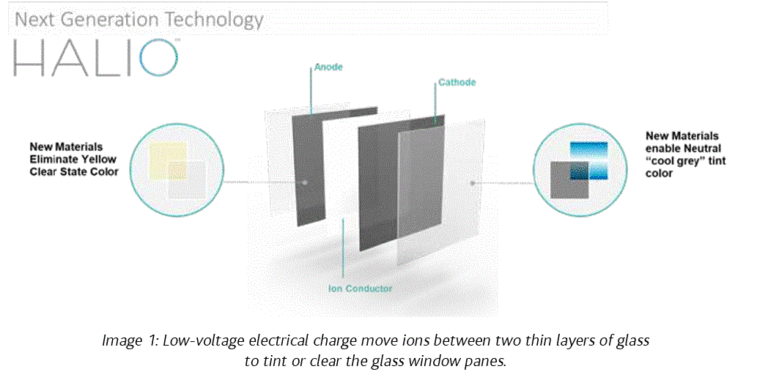IS YOUR WINDOW ‘SMART’ ENOUGH TO FIGHT RISING HEATWAVES?

Keeping cool is a priority in the tropical island state known for its high consumption of airconditioning. On a per capita basis in ASEAN, Singapore has the highest consumption of electricity as well as the highest installed rate of Air conditioning. By 2040, the consumption of electricity could account for up to 40 per cent of ASEAN’s electricity demand, up from 25 per cent currently.
While there are around 1.2 billion room airconditioning units around the world, they operate at around 14 per cent of the maximum theoretical efficiency as compared to products like LED lights that run at up to 89 per cent efficiency.
Such inefficiencies are taking a toll on the planet. Air-conditioning currently consumes 2,000 Twhs of electricity annually, contributing 12 per cent or 4 billion tons of CO2 into the environment. Electricity consumption is expected to triple to
6,000 TWhs by 2050, according to the International Energy Agency.
While air-conditioning is the go-to solution to beating the heat, it isn’t the only one. Windows are the first line of defence to combat the heat and glare. However, are the current ‘face’ of windows ‘smart’ enough to protect occupants from the fluctuating weather conditions and optimise air-conditioning efficiency? With the majority of solar heat gain derived from windows, glazed doors and skylights, current solutions like blinds, curtains and secondskins around buildings offer partial respite but lack the realtime dynamism to curb heat before it enters the building.
This is where next generation electrochromic technology or smart-tinting glass can help. It transforms windows to respond to light conditions, time of day, and seasonal patterns to precisely control the tint of glass panels in the building’s façade - from clear to its darkest tint within 3 minutes.

How does it work? Through a stable and patented electrochemical reaction between two glass panes, users can change the optical characteristics of the glass when a low-voltage electrical charge is applied; ions move between materials to darken or clear the glass; see Image 1.
As electricity is only needed during the transition, Halio smart-tinting glass can be set to ‘clear’ or achieve various levels of tint for aesthetic or comfort reasons and does not require power to maintain the desired tint level.
While electrochromic technology has been around for decades, newer technologies such as those used by Halio smart-tinting glass have not only tackled the drawbacks of earlier versions on the market in terms of tint colour, uniformity and speed. Halio also enables window automation in connection to its cloud system with bank encrypted security.
Halio Cloud can monitor facades in real-time with solar irradiance sensors and can be integrated with a building management system (BMS) to respond dynamically to external weather conditions and internal factors like the number of occupants, space, position of lighting, office or room layout.
This means that air-conditioning no longer needs to be manually adjusted to coincide with the weather
patterns. Controlled through the building management system, glass facades and air-conditioning can adapt to changing climate conditions throughout the day, making it more intuitive, environmentally sustainable and efficient.
For instance, the windows facing East can be programmed to a darker tint at 7:30 am, while the other windows remain clear and air-conditioning adjusted to a cooler setting in preparation for people to start their workday. As the sun path moves throughout the day, the real-time data collected by the solar irradiance sensor will be interpreted by the Halio algorithm to adjust the tint according to the sky conditions on each façade orientation.
From a design perspective, the key issue on hand is how to integrate and optimise the use of such smart glass technology. Why?
With a responsive living glass façade, automated electrochromic glazing will bring benefits in greater energy efficiency and savings without having to compromise on the views.
While air-conditioning is not going away anytime soon, smart-tinting windows coupled with building automation can provide occupants relief from glare, optimise daylight, while reaping the rewards of energy savings and sustainability.
Related Posts
-
 cair fresh, A Washable Paint That Also Cleans the Air No Comments | Apr 24, 2020
cair fresh, A Washable Paint That Also Cleans the Air No Comments | Apr 24, 2020 -
 Green Bio-Based Materials from Agricultural Waste for a Circular Economy No Comments | Aug 16, 2020
Green Bio-Based Materials from Agricultural Waste for a Circular Economy No Comments | Aug 16, 2020 -
 YOTTA’s EMERGING TECHNOLOGIES No Comments | Apr 14, 2019
YOTTA’s EMERGING TECHNOLOGIES No Comments | Apr 14, 2019 -
 BeeBryte’s Data-Driven HVAC Control & Optimization Software No Comments | Dec 23, 2019
BeeBryte’s Data-Driven HVAC Control & Optimization Software No Comments | Dec 23, 2019


